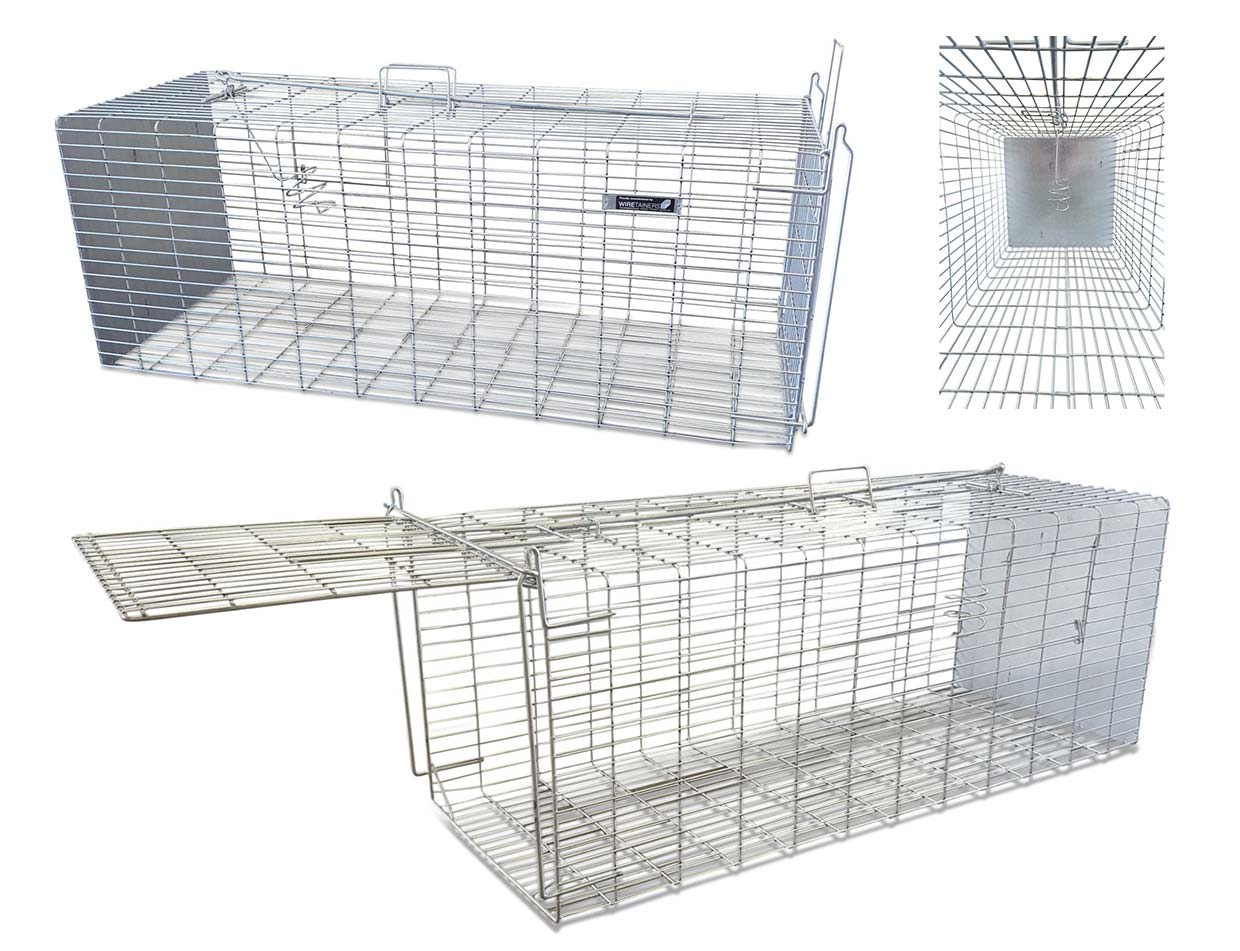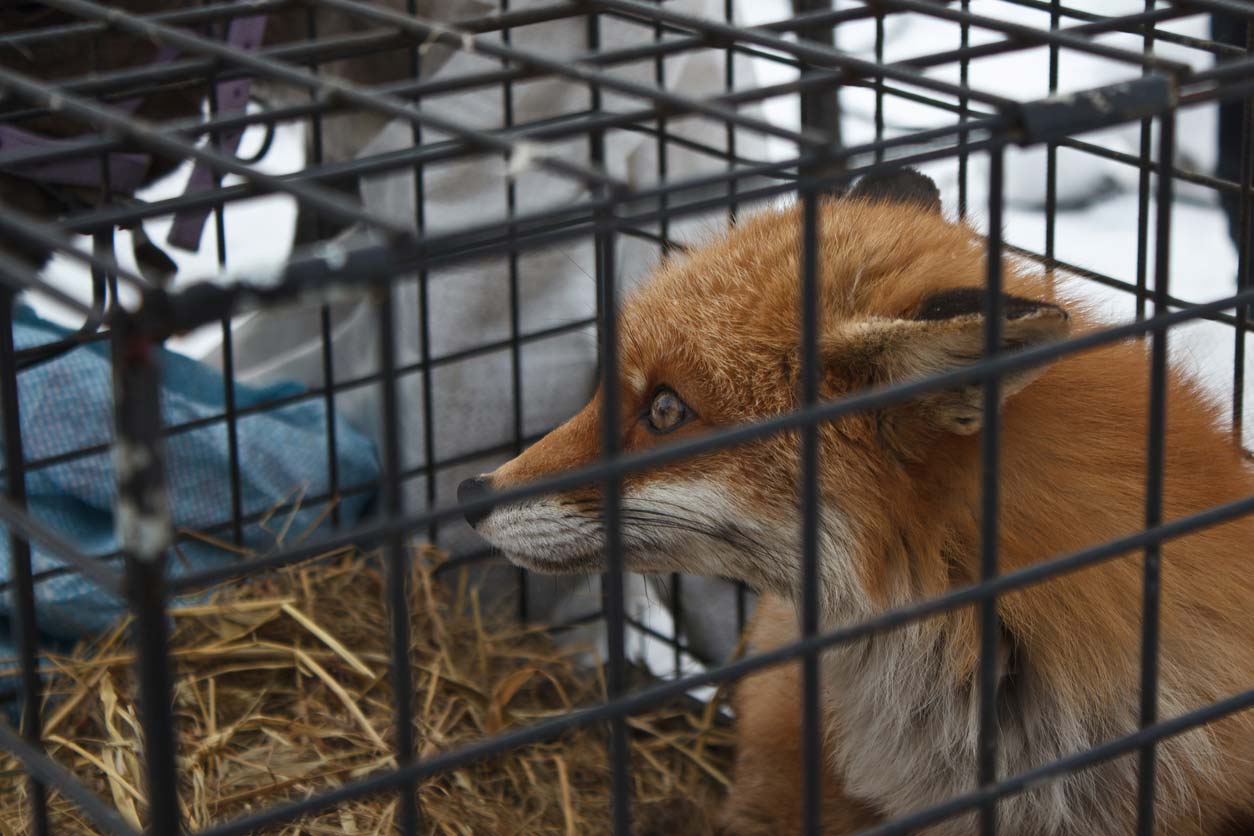How to trap a fox
Fox problems in the chicken coop
Part of being a good chicken owner is protecting your birds from predators like foxes. A well-built coop is part of the solution. But foxes are determined. If one has found your coop, it will keep trying to get in. The best way to protect your chickens is to get rid of the fox.
Why are foxes a problem?
Foxes are a huge problem in Australia.
In the chicken coop, a single fox can kill multiple chickens, causing havoc and heartbreak for chicken keepers. Foxes are blood-thirsty hunters. Often, a fox will kill a whole flock of chickens even if it only eats one bird.
Foxes have a reputation for being wily for a reason. If there is a weakness in your chicken coop, a fox will find it. Foxes can dig like a dog, climb like a cat, squeeze through gaps like a snake and are even strong enough to force their way through doors and wire. To keep foxes out, your coop needs to be solid-floored (or have an apron) with strong sides and a roof or floppy-topped fences.

Foxes can prey on household pets, including cats, rabbits, guinea pigs, birds and even small dogs. They are also a major problem for Australian farms, killing thousands of lambs each year. But it is not just farm animals and pets that suffer from fox predation.
Foxes are an introduced species in Australia and do lots of harm to native wildlife. They have contributed to the decline of ground-dwelling bird species and small-to-medium mammals. Native animals have not evolved to cope with predators like foxes, making them easy prey.
Is it legal to trap foxes in Australia?
Foxes are an introduced species and declared pest animal in all states and territories of Australia except NSW. Although every state and territory has its own rules and regulations, they all agree that pest animals like foxes should be controlled and removed.
You can look here or contact your local council to see which removal strategies can be used for foxes in your area.
What is the best control method for foxes in Australia?
There are many different ways to control foxes:
- Fencing
- Leg-hold traps
- Snares
- Shooting
- Poison bait
- Den fumigation
- Cage traps
Although keeping foxes out with appropriate fencing is the best method of fox control, it doesn't work when you already have a fox problem.
Leg-hold traps and snares are illegal in many areas or require special permits. Animals caught in leg-hold traps and snares are usually very distressed. They need to be shot immediately, thus requiring a fire arm and licence.
While shooting foxes can be effective if you have a gun licence, it is hard to catch them unawares. If, after hours of stake outs, you miss your first shot, that fox will never come close enough for another even as it continues to prey on your chickens and livestock.
In most council areas, the use of poison bait to control foxes and wild dogs is tightly regulated. Poison bait is problematic because it poses a threat to domestic dogs and other non-target animals. It is not suitable for use in the urban and semi-urban areas where foxes often thrive.
Den fumigation is to widely used. It requires special equipment and training, and it may not be legal in all areas.
In Australia, the best way to control foxes on your property is a cage trap.

Benefits of a Fox Cage Trap
- Easy to use
- Effective
- Permitted in most council areas (speak to your local council)
- Generally considered humane: does not harm the animal or cause pain
- Low risk to non-target species
- It is easy to release any non-target animals and they are usually unharmed
- No need to handle the fox
- Easy to transport the fox if needed
- The animal can be euthanised without removal from the cage
How to use a cage trap to catch a fox
To catch a fox using a cage trap, you simply set the trap somewhere the fox is likely to go.
Cage traps must be checked daily, ideally first thing in the morning. This is important to ensure the humane treatment of any pest animals and also so that any animals that were caught accidentally can be released unharmed.
It is best to contact your local council about humane euthanasia options in your area prior to using a fox trap.
The humane treatment of captured animals, including foxes, is very important in order to avoid any offence. We recommend becoming familiar with the animal protection legislation in your region.
It is important to set the trap correctly and in a good location. Foxes are wary creatures, so if the fox is scared by the trap, it will never go near the cage again. In our troubleshooting section below, we provide advice on how to entice a fox into a trap.
Fox trap plans
The best plan for catching a fox is to set the trap up somewhere the fox already goes. If the fox has safely been somewhere in the past, it will be less wary of a trap placed there.
Placing the trap near a food source, such as the chicken coop, helps ensure the fox is focused on food and not potential danger.
How to tell where a fox has been:
- Scat: Fox scat looks like cat poo, but is a bit larger and usually contains seeds, including chicken feed.
- Smell: Foxes smell a bit like skunk. Often you can work out where they have been by the smell.
- Remains: If a fox has gotten a chicken, you may be able to locate the remains such as bones and feathers. The fox may return to this spot.
Any of these signs indicates a good place to set up your fox trap.
Along fences and trails, near water sources and around food sources, e.g. the chicken coop, are also good locations to set a fox trap.
Avoid setting up a fox trap in an area frequented by non-target species such as pets, wildlife or livestock. This will decrease the risk of a non-target capture.
How to catch a fox in the chicken coop
If a fox has already gotten into your chicken coop, it will be back. If you can, set the fox trap in the coop before fixing the hole or damage.
Set up the trap wherever the fox is getting in so that the fox has no choice but to enter the trap. Because the fox has already entered the coop safely, it is likely to walk right into the trap.

How to set a fox trap
Foxes are wary of the smell of humans and will avoid a trap that smells like people. For the best chance of catching a fox:
- Wear clean rubber gloves when handling the trap and bait
- Wear rubber-soled shoes around the trap
- Leave the trap outside or in the chicken coop for a few days before use
- When setting the trap, rub all over with the bait to disguise any other smells
To set a fox trap:
- Rub the trap all over with bait
- Put the cage in position
- Peg the trap to the ground using tent pegs or similar, to prevent any trapped animals from tipping the trap over
- Cover the floor of the trap with a good layer of dirt or leaf litter
- Using the bait door, twist the bait into the baiting basket
- Ensure the baiting door is firmly closed
- Open the door and follow trap instructions to fix
It is best to set the trap in the evening. Traps must be checked every morning. If leaving the trap open during the day, ensure it is not accessible to chickens, pets or wildlife. In most cases, it is best to deactivate the fox trap each morning and reset at night.
Good bait for a fox trap includes:
- Chicken necks
- Whole chickens
- Any offal or organ meat, e.g. liver
- Rabbit
- Kangaroo
- Lamb
- Fish
Foxes are more likely to be attracted to a bait that is familiar, i.e. if a fox is preying on your sheep, lamb is likely to be an effective bait. Smelly baits also tend to be more effective because they better cover any human smells around the trap.
Fox cage trap trouble-shooting
Foxes can be very wary of traps. Here are some trouble-shooting tips for catching a problem fox.
Try placing an additional piece of bait in the mouth of the trap, where the fox does not need to go in to get it. If it safely takes that piece of bait, it is more likely to enter the trap for more.
If the fox is not going into the trap, wire the door open and set the bait at the entrance of the trap. Once the fox is comfortable taking the bait from there, gradually move the bait further inside the cage over a few nights. Once the fox is comfortable entering the cage to take the bait, you can place the bait into the basket and set the trap properly.
If you don’t know where to set the trap or the fox doesn’t appear to have found it, lay a scent trail using a very smelly bait. The scent trail should lead into the trap and end with the bait. Ensure the trail does not lead directly to the trap.
Fox lures are also available commercially and can help attract a fox to the trap.
For more:
Happy chicken keeping!


